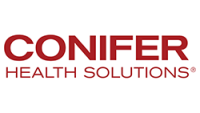How to protect your revenue cycle on the road to price transparency compliance
While the CMS hospital price transparency rule has been in place for more than a year now, the vast majority of hospitals are still noncompliant. By some estimates, just 16% of hospitals have achieved full compliance. While a larger number have posted prices, more than half failed compliance due to missing or incomplete data.
The problem isn’t that hospitals don’t think the rule is appropriate. Most agree that price transparency benefits patients by giving them the ability to take more control of their own healthcare costs. The challenge for hospitals is that many are struggling with multiple roadblocks, including a lack of clarity around regulations and insufficient resources.
The penalty for hospitals with less than 30 beds is $300 per day. For hospitals with 31 or more beds the penalty is $10 per bed per day.
However, many hospitals believe that the cost of disclosing negotiated rates would be more financially detrimental than the cost of fines.
Lack of regulatory clarity and guidance
KLAS recently released its Price Transparency 2022 perception report. An interview with 66 revenue cycle leaders revealed significant difficulties around regulatory deployment, and most said there needed to be further clarification and guidance at the federal level. Participants also expressed concerns around “cost, data accuracy and patient adoption of pricing tools.”
The challenges for smaller hospitals, according to the report, are even greater. Because larger health systems can offer more competitive pricing, smaller hospitals worry that patients who might normally have come to them will go to larger hospitals to seek cheaper prices. Many hospitals have expressed concerns that posting prices benefits payers and providers more so than patients. They’re also concerned that releasing negotiated rates will give payers even greater control and leverage during negotiations.
In many cases, hospitals are playing a wait-and-see game,choosing not to post prices
until their competitors do.
Insufficient resources
Most hospitals are still reeling with the impact of COVID-19, especially in the area of staffing. An article in hfm magazine reports that the pandemic-driven workforce shortage is leading to significant changes in revenue cycle management operations at many hospitals and health systems. According to one recent survey, 55% of healthcare finance leaders say they have a shortage of billing specialists and 42% said they have a shortage of patient follow-up staff.
Besides revenue cycle staffing challenges, many hospitals are struggling to find the financial resources with which to purchase software necessary to support price transparency. Others have issues actually capturing the information from the charge master and say that creating an individual template for every service is burdensome and requires resources they don’t have.
Creating machine-readable files seems to be a big issue. In one study of hospitals in the state of New York, just 12% of hospitals had implemented the machine-readable requirements, 69% had partially implemented and 19% had not implemented anything at all for this requirement. The fact that the machine-readable files aren’t really aimed at most patients, but at researchers, vendors, app developers and others, may be a reason for lackluster compliance on this regulation.
The impact on the revenue cycle
Hospitals have been able to buy some extra time due to the deadline extension during the height of the COVID-19 pandemic. And while CMS has issued hundreds of warnings, they’ve now started doling out fines. As of June 2022, they had issued two civil penalties, one for $883,180 and the other for $214,320. Those are not unsubstantial amounts. Hospitals who purposefully delay implementation, at this point, are putting their revenue cycle at risk.
One good way to protect the revenue cycle while working on price transparency compliance is to move forward with other initiatives that promote price transparency and simplify patient collections.
The first is to shore up eligibility and coverage estimation processes. While this may be challenging during an unplanned emergency, for planned services, having this information up-front enables patient access staff to capture the most up-to-date information in order to reduce denied claims down the road.
Providing a patient responsibility estimation to patients prior to receiving their service is important. This gives patients the opportunity to plan how they will pay. It also gives hospitals the opportunity to collect upfront or to set up payment plans for the patient, helping reduce the risk of the account going into default and being written off. It also reduces the need to send an account to a collection vendor, which can be a costly endeavor that often brings only a small percentage of the full amount owed.
Third, be sure to have a rock-solid coding team in order to reduce errors that lead to claims being rejected or denied. Top issues that lead to rejections and denials include missing or invalid claims date, prior authorization and precertification issues, as well as inaccurate eligibility or registration information.
Those three issues alone are responsible for more than half of all denials. Keeping coders up to date can be challenging, however, so it’s critical to have ongoing education for your coding team. Make sure your team is aware of how the quality of their work impacts the quality of the hospital’s bottom line. Using incentives for high quality work can help and might also reduce turnover.
The journey to compliance
It’s difficult to say when or if the CMS will begin assigning more penalties or whether compliance deadlines will be further delayed. In the meantime, patients are stuck right where they were a decade ago — not knowing what their hospital service will cost until after receiving the bill. Yet, at the current rate of compliance, one thing is for sure: Hospitals need to do all they can now to make it easier for patients to access and pay for the services they need. If we wait for full compliance, it will never happen, and hospital revenue cycles will continue to suffer.






